Sittong: A village of oranges in West Bengal
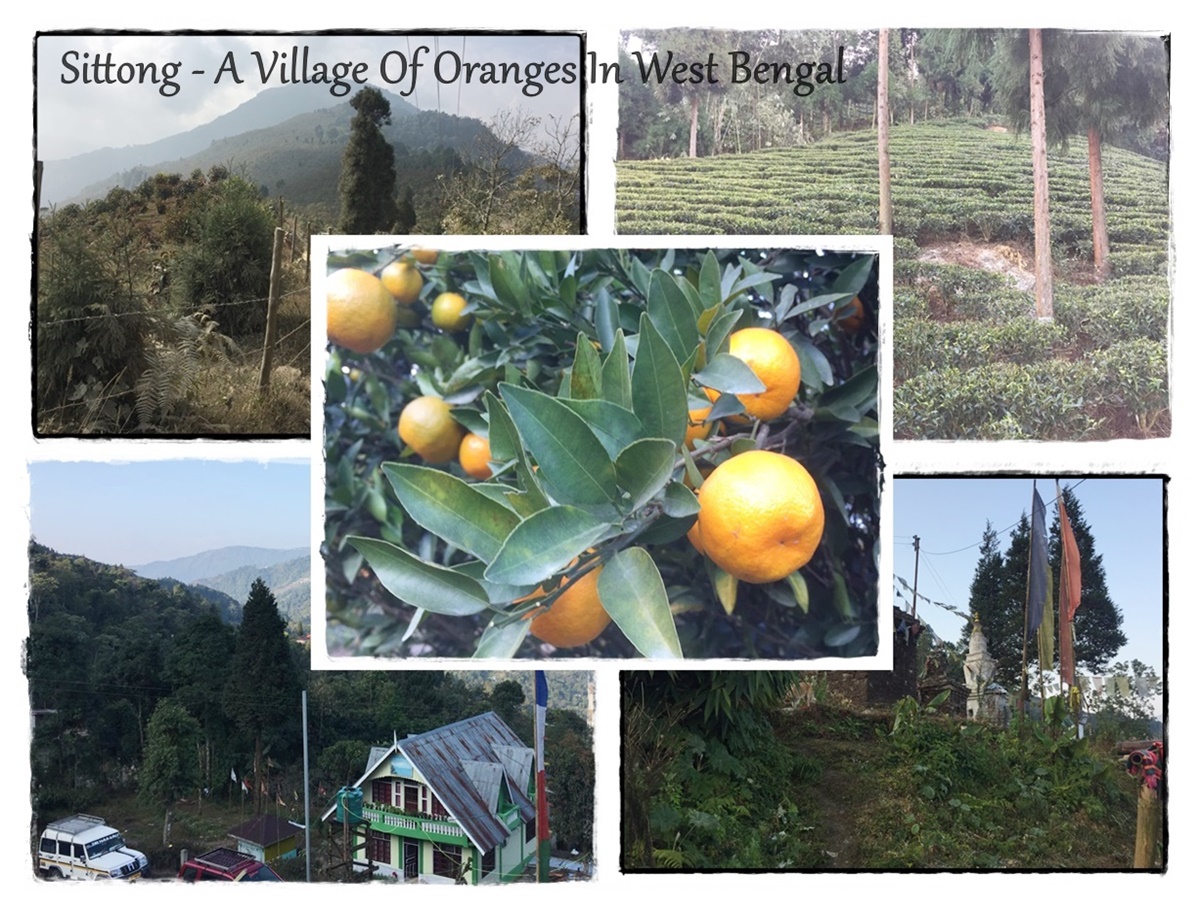
Sittong or Sitong – famous for Darjeeling orange
In the last week of December 2019, I took a vacation leave from work and went to North Bengal with my family.
I booked everything (car & homestays) in advance from Kolkata, as I always do when I take my family. But for my stay in Darjeeling, I booked my favorite hotel near Darjeeling Old Clock Tower, called Broadway. It is one of the oldest and most popular hotels in Darjeeling. I have had a passion for this hotel ever since I stayed here on my first visit to Darjeeling, and I love their hospitality and service. I think it is a Heritage hotel and ideal for the middle class.  Our bus reached Siliguri very late due to a heavy traffic jam near Raiganj, but as a result, our car driver had to wait for a long time. Anyway, we finally finished the introduction session with the driver and started the journey to Sittong. We liked the behavior of our driver, as there was no annoyance on his face.
Our bus reached Siliguri very late due to a heavy traffic jam near Raiganj, but as a result, our car driver had to wait for a long time. Anyway, we finally finished the introduction session with the driver and started the journey to Sittong. We liked the behavior of our driver, as there was no annoyance on his face.
We took the route from Kalijhora towards Sittong as it takes the shortest time to reach our first offbeat destination. But because of the very steep road, the elevation was increasing at every turn, which was very exciting.
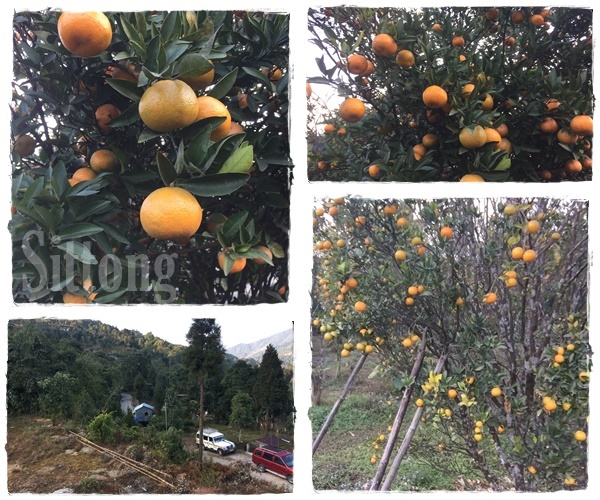
Sittong: Orange Orchards, Majestic Views of Kanchenjunga, endangered Salamanders, Old Tea Gardens, and Cinchona Plantations
These are the main attractions of this beautiful tourist destination in North Bengal, on the banks of the flowing mountain river Riyang, which divides Sittong and Mungpoo.
Rabindra Smriti Bhavan is a well-known heritage bungalow in Mungpoo where Nobel Laureate poet Rabindranath Tagore stayed and wrote some of his masterpieces.
Where is Sittong (Sitong) Located?
Altitude: At around 4000 ft above the sea level.
Location: This orange village is located in Kurseong sub-division of Darjeeling district in the Indian state of West Bengal.
Sittong consists of three panchayats covering a large geographical area, and each panchayat has many villages. It is also called Sittong Khasmahal. So, Sittong is not just a village. Sittong is divided into three parts (Sittong I, Sittong II, and Sittong III).
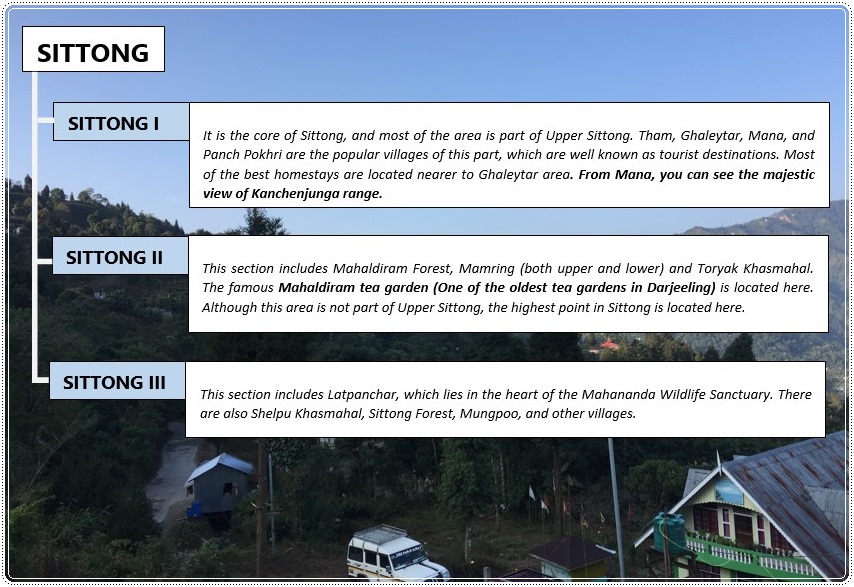
Essential Information of Sittong
Nearest Airport:
International: Bagdogra Airport (IXB), WB
Nearest Town:
Kurseong Town (It means in Lepcha Language is The Land of White Orchids)
Nearest Main Railway Stations:
- New Jalpaiguri (NJP)
-
Kurseong Railway Station (KGN): The headquarter of DHR is at Kurseong. This station provides access to Toy Train. UNESCO declared the Darjeeling Hill Railway (DHR) a World Heritage Site on December 5, 1999.
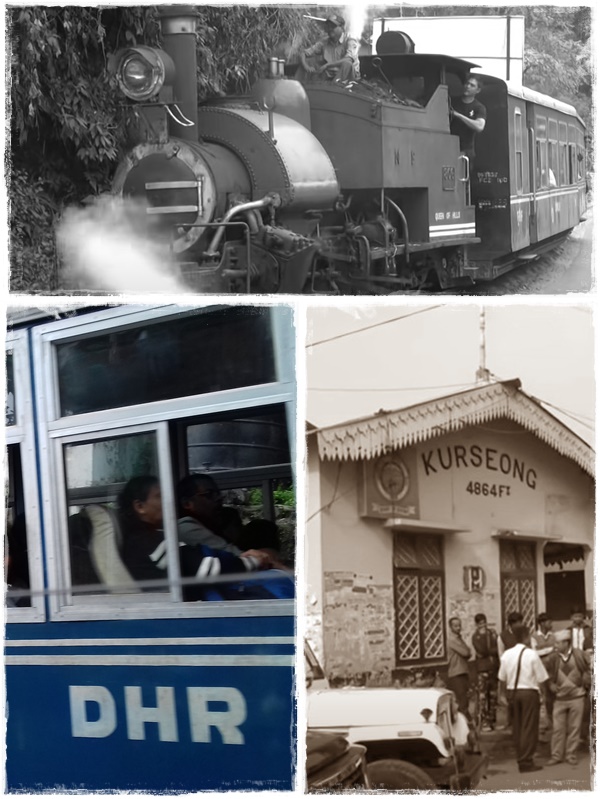
Local Medical Facilities
Sittong Primary Health Center (PHC) is located at Ghalaytar Bazar, and Cinchona Plantation Government Hospital is in Mungpoo. Before travelling, please carry some medicines for common high-altitude issues and others common issues.
How to Reach
There is no direct bus service available from NJP to Sittong. Shared cabs are available from Salugara in Siliguri, but they are very few in number.
Alternatively, one has to take a reserved vehicle to reach Sittong from NJP, Siliguri Bus Stand or Bagdogra Airport.
Also, you can take a bus or shared car from Siliguri to reach Kalijhora or Dilaram, and from there take a local shared car to Sittong, which is mainly used by locals and is available once or twice a day but is not convenient for tourists.
There are below routes to reach Sittong.
- The shortest route (55 kms) is through Siliguri → Sevoke → Kalijhora → Latpanchar→ Ahaldara → Sittong.
- The second route (78 kms) passes through Siliguri → Rambhi → Mungpoo → Sittong.
- The third route (75 kms) is through Siliguri → Kurseong → Dilaram → Bagora → Ghareytar → Sittong.

People of Sittong & their language
Sittong is mostly inhabited by people of the Lepcha community. Apart from Lepcha, various Gorkha communities such as Gurung, Bhujel, Rai, Newar, Yogi, etc. live in Sittong. Locals here generally speak Hindi and their own community languages like Nepali, Rai, etc.
Livelihood
The natives are mainly dependent on agriculture, especially now that they have widely adopted organic farming methods. Oranges are abundant in this region; hence, oranges are considered a cash crop. Also, one of the sources of income is animal husbandry. Many people here are involved in tea plantation work. Almost every house cultivates different types of flowers and orchids, which are also a source of income. As the Gorkha community lives here, many serve in the Indian Army.
But because of the natural beauty and the famous orange orchards, many tourists visit here every year, so in the past few years many local people have become involved in tourism, which is one of the lucrative professions of today.
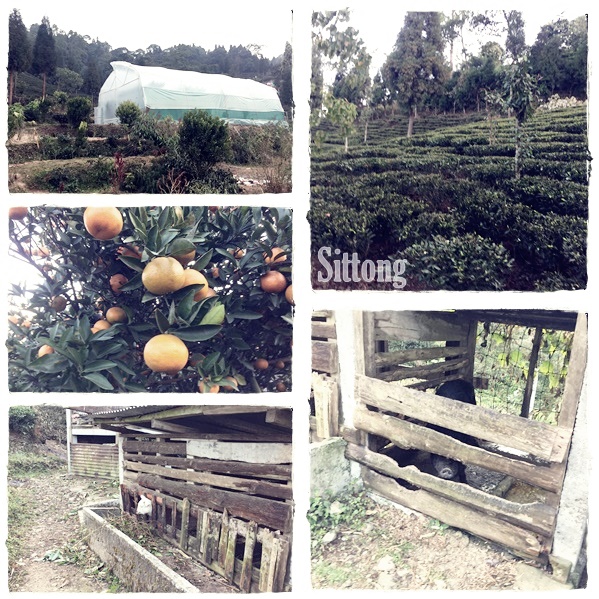
Local Delicacy
There is a lot of variety in the local cuisine here. As the Lepcha community is predominant, traditional Lepcha dishes are available here. Apart from this, the presence of various Nepali dishes is also noticeable.
Because I have already described known and unknown traditional dishes from various indigenous communities of the eastern Himalaya in previous blog posts, please go back and read those. Also, you can choose the “Gastronomy” category of this blog for details or click the below links.
Local Festivals
Sittong is home to various indigenous communities, so various festivals are celebrated almost throughout the year. Tourism-based festivals are celebrated here along with some main festivals like Losar, Holi, Dashain (Durga Puja), Chaite Dashain or Chhota Dashain (Ram Navami), and Diwali (Festival of Lights).
I have already described some popular festival details in my previous blog posts, so please review those blog posts. Also, you can choose the “Festival” category of this blog for details or click the below link.
Apart from the traditional festivals, the Orange Festival is celebrated here every year with great enthusiasm, which is one of the tourist attractions. This festival is held every year in the month of December.
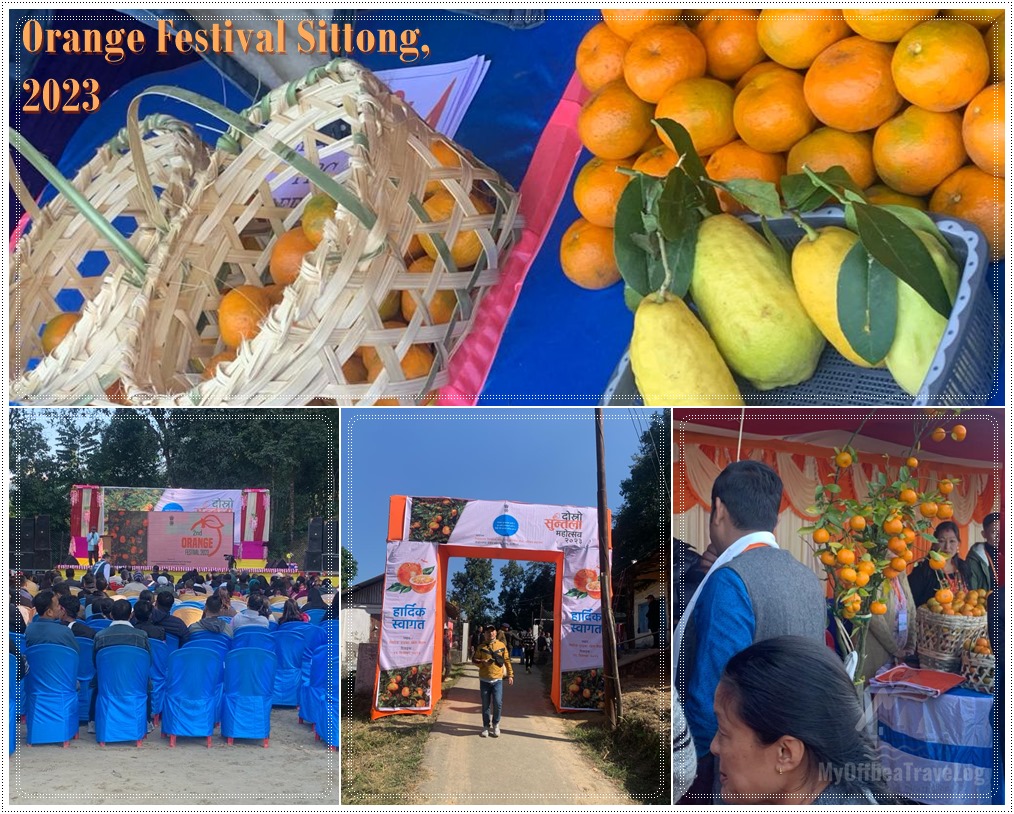
The main objective of this festival is to promote the world-famous Darjeeling orange market and increase the production of winter fruits.

Festivals of the Eastern Himalayan Region
What to do & Nearest Attractions
- Nature & Village Walk and Activities: This is best option to feel the surrounding beauties and know the local. As a result, there is an opportunity to meet new people and learn about their customs, culture, and many unknown facts and stories. You can go to the bank of the riyang river for camping and picnic.
- Spend time in any Orange Orchard: Sittong turns orange all around during the orange blossom season, and the backdrop of snow-capped mountains makes it even more attractive. You can pick oranges from the trees with permission from the farmers and relish fresh oranges full of sweet juice.

- Lepcha Monastery: A 350-year-old Buddhist monastery is located in Upper Ghaleytar (Sittong-I) near Tham village, which is mainly made of mud and bamboo. Due to an earthquake in 2011, this monastery was severely damaged. The monastery is known by different names to the locals. But its real name is Upper Ghaley Tar Longho Lepcha as this name is written on the black nameplate of the monastery. Outside the monastery, a few chortens (Buddhist Stupas), colorful prayer flags, and the surrounding solitude create a magical atmosphere that attract tourists.
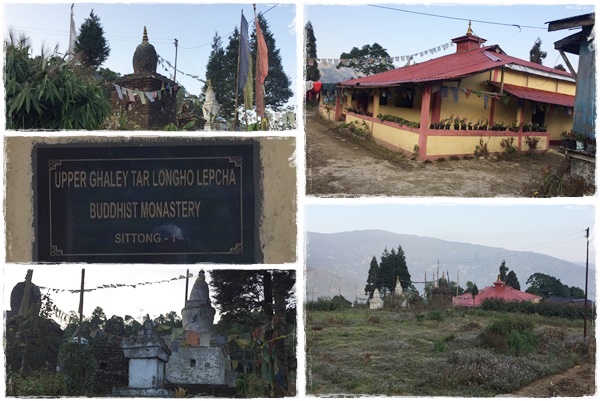
- Bamboo Church – There is a beautiful church that is more than 100 years old. Earlier, there was a bamboo church, but the bamboo church was destroyed by fire, and now a new concrete building has been constructed there. The church has a wonderful view of the mountains surrounding it.
- Jogighat Steel Bridge – A lofty 74-meter-long and 5-meter-wide steel bridge connecting Mungpoo and Sittong, was inaugurated by yoga guru Baba Ramdev. Although abandoned, the old wooden suspension bridge of the British period is still visible as a witness to history. The riverside area of the Riyang below the Jogighat Bridge is a popular picnic spot for tourists and locals. Also, this bridge is one of the tourist points in the Sittong area, where many tourists visit to see the beautiful steel bridge and the greenery surrounding it.
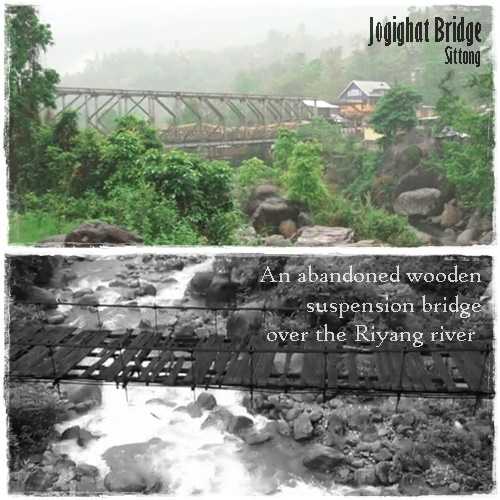
- Rabindranath Tagore Museum (Rabindra Smriti Bhavan), Mungpoo: This heritage building is one of the best tourist attractions in Mungpoo, which is located right next to the Quinine Factory.
The bungalow was allotted to Dr. Manmohan Sen, who was director of the quinine factory at that time. He was the husband of the poet and novelist Maitreyi Devi.
Nobel laureate poet Rabindranath Tagore visited here a total of four times between 1938 and 1940 at the invitation of Mrs. Maitreyi Devi. Many of his classic works were composed here.
This house is popularly known as Rabindra Smriti Bhavan. However, due to lack of maintenance for many years, this bungalow fell into disrepair, but later it was renovated on the initiative of the government. Rabindra Smriti Bhavan has been converted into a museum known as the Rabindranath Tagore Museum.
 The bungalow is filled with priceless items including the poet’s photographs, paintings, used furniture, artefacts, manuscripts and used paints. Many steps have been taken to make this heritage bungalow more attractive to tourists.
The bungalow is filled with priceless items including the poet’s photographs, paintings, used furniture, artefacts, manuscripts and used paints. Many steps have been taken to make this heritage bungalow more attractive to tourists.
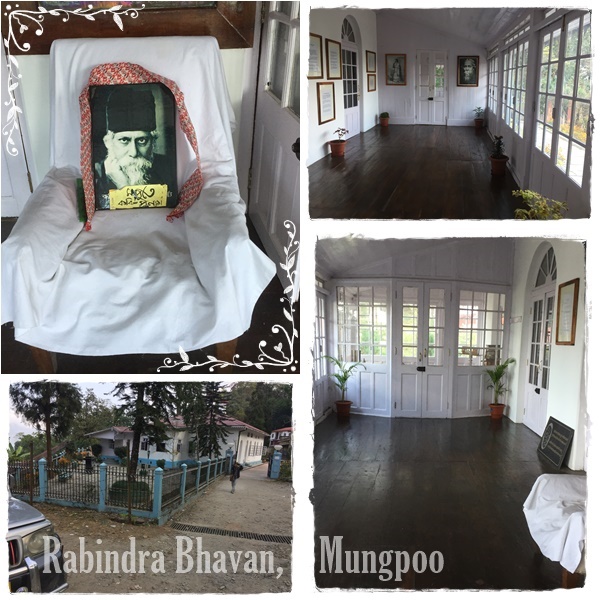
The West Bengal government and the Gorkhaland Territorial Administration (GTA) are working together to promote Mungpoo, one of Rabindranath Tagore’s favorite destinations, as a popular tourist spot. So, a tree house has been constructed by the Cinchona Directorate in the Rabindra Smriti Bhavan premises to attract more tourists.
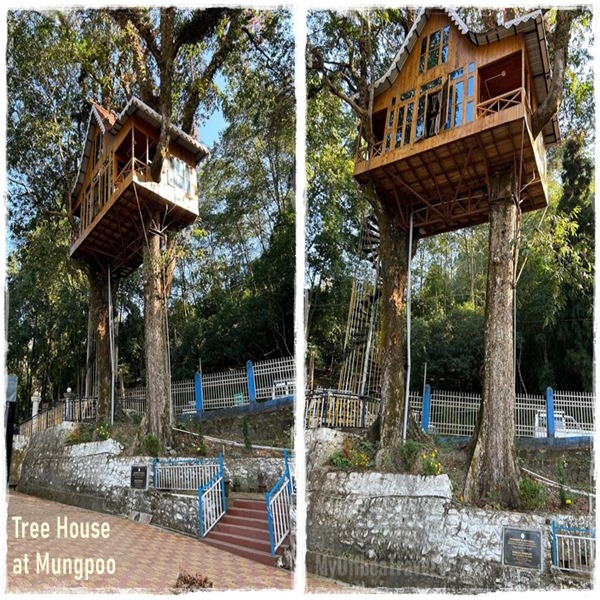 Photo Credits: Sudipta Chatterjee
Photo Credits: Sudipta Chatterjee
- Govt. Quinine Factory, Mungpoo (Estd. 1874): The first government Quinine factory was set up at Mungpoo in 1874 and it is one of the oldest factories in the District of Darjeeling. An old anti-malaria drug Quinine was made from the bark of the cinchona tree.
This factory produced life-saving anti-malarial drugs such as quinine, quinine hydrochloride, and so on. But due to various reasons, this factory has been closed for a long time. Now the factory bears the memory of its glorious history. However, attempts were made to restart in 2020.

- Mungpoo Orchid Garden: This colorful orchid garden is also known as Mungpoo Cymbidium Orchid Park. Tourists can see more than 150 rare varieties of orchids in this park. The park suffered extensive damage due to a storm in 2015, but it was reconstructed later.
- Latpanchar: The term LATPANCHAR was derived from the Lepcha language. In English, LAT means Cane and PANCHAR means Jungle. This place is part of Sittong III.
It is an ideal place for birdwatching because this is a refuge for the most colorful and endangered species of rufous-necked hornbill (Aceros nipalensis) and other species of birds. it is located at an altitude of almost 4500 feet above sea level in the hilly region of Mahananda Wildlife Sanctuary. This offbeat destination is full of flora and fauna. Also, this place is an ideal place for those who are interested in wildlife photography.
There are still many cinchona plantations, which were started in 1943.
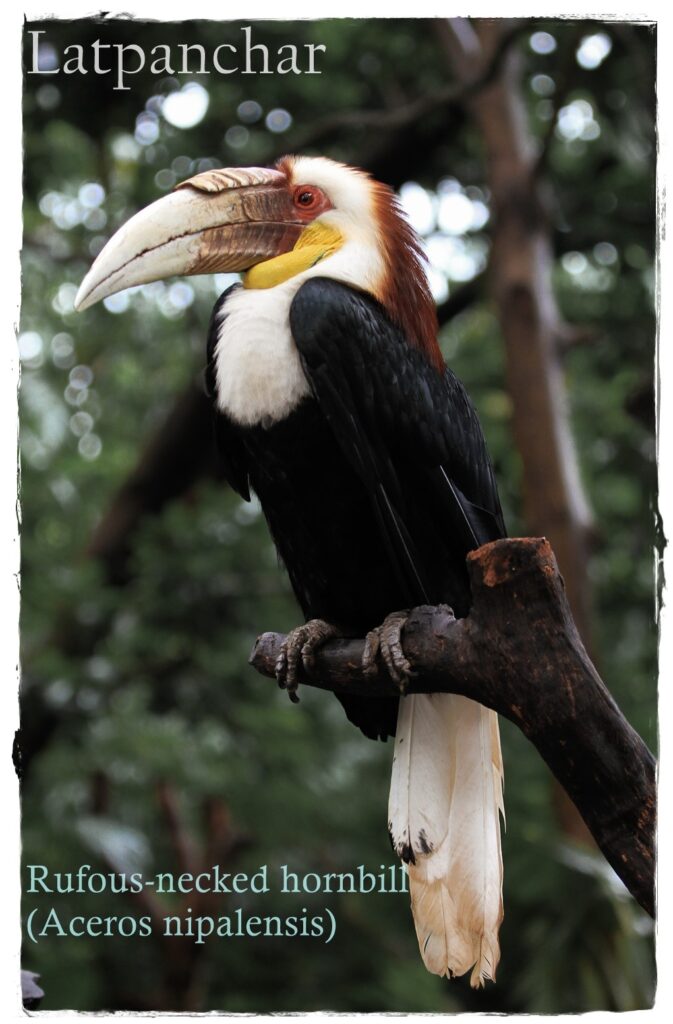
- Latpanchar Monastery: In Latpanchar, there is a monastery called Latpanchar Mahni Choikhorling Gompa. This beautiful three-story monastery is painted in vibrant colors and built in Tibetan architectural styles, and the interior is richly decorated with murals and Tibetan paintings.
- Namthing Pokhri (Lake): This is one of Sittong’s main attractions. The picturesque Namthing Pokhari is located tucked away on a hillock in the Shelpu Hills. The area is surrounded by a green pine forest. The lake is

the natural breeding site for the extinct species of Himalayan salamander, which is also called the Himalayan Crocodile Newt or Orange-warted salamander. The Himalayan Salamander in Namthing Pokhari is classified as a Tylototriton Verrucosus species. These salamanders are now entirely gone in other parts of the world. Fortunately, they are still surviving in the solitary Namthing Lake of the Shelpu Hills and other parts of the Darjeeling district. Therefore, this rare amphibian is conserved under the Indian Wildlife Protection Act, 1972. Salamanders hibernate during the winter, so it’s best not to disturb them during that time.
- Aahaldara or Aahal Sunrise Viewpoint: The hilltop of Shelpu Hills is at an altitude of about 4500 feet and is known as Aahal Sunrise Viewpoint. A wonderful 360-degree panoramic view of the surrounding mountains can be seen from here. On a bright and sunny day, Kurseong, Bagora, Tinchule, and Kalimpong hills, as well as the impeccable beauty of the Teesta River (a tributary of the Brahmaputra River), the Dooars, and the Terai plains are clearly visible from this viewpoint. From the tophill, you can see the tea plantations going down in steps and some beautiful small cottage-type hotels in between, which will attract you to spend a few days here. Also, if you want, you can spend the night in the tent.

There is a ticket counter at the Shelpu Hills entry point from where you must collect the entry fee (which varies depending on car, bike, or person). A Rocky dirt road climbs up after the check post. It’s an around 300 meters uphill walk to reach the viewpoint. You can see Cinchona Plantations on both side of the road.
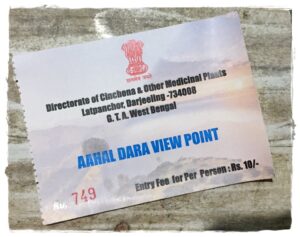
 Trekking Routes:
Trekking Routes:
The Sittong valley is a well-known trekking site for adventure enthusiasts. Homestay owner and trekking organized companies can arrange trekking to nearest offbeat destinations.
-
- Sittong to Aahaldara (Top of the Shelpu Hills) and Latpanchar.
- Sittong to Chatakpur through forest trails.
- Sittong to Bagora via Mamring.
- Sittong to Kurseong Town via Majua & Mahadirama.
![]() You can see some selected stunning photos & videos by clicking on the blog’s Instagram, Facebook and X(Twitter). Also, click the Gallery Section of this blog for only photos. I hope you will like those.
You can see some selected stunning photos & videos by clicking on the blog’s Instagram, Facebook and X(Twitter). Also, click the Gallery Section of this blog for only photos. I hope you will like those.
Where to Stay
There are many homestays in Sittong now, so tourists don’t have to worry too much about accommodation & food. There are many homestays that offer hotel-like facilities, so those looking for such modern amenities in a remote location will not be disappointed. Most of these are run by locals. The homestays can arrange transportation if it is required. Some homestays have parking facilities. Also, they can arrange nearby short treks, riverside camping, rock climbing, and sightseeing as well.
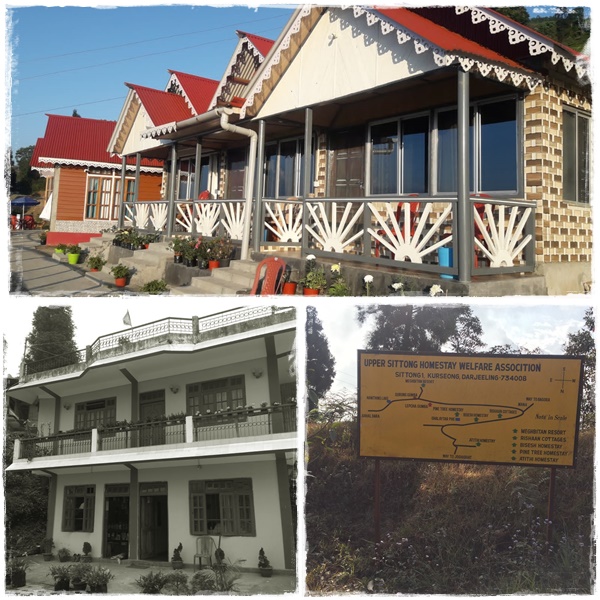
If you are interested, they can arrange barbeque or any special food dishes obviously you have to pay more. but for this you can easily get the latest information from various online booking sites.
Below are the contact details for some homestays for the latest tariffs and other valid information.
- Kamal’s Homestay, Upper Sittong
Owner: Kamal Gurung, Ex-Army personal
Contact: +91 9339012005,8768291644,9547237332
We stayed at Kamal Gurung’s old homestay in 2019 and our experience was great as their behavior and hospitality were very sincere. But in 2020, he built a new homestay. I heard it’s really nice and has modern facilities. Kamal Gurung is an ex-serviceman and gave me a lot of information about Sittong.
- Bisesh Homestay
Owner: Bikram Rai
Ghalaytar, Sittong,
Phone: +91 9933545439/9851166076 - Sunrise View Point Homestay
Ahaldara, Sittong III
Phone: +91 7019592753, 9800637784 - Avni Homestay
Sittong II,Simring Tea Garden
Phone: +91 9434328786 / 7903070910 - Panch Pokhari Homestay
Sittong III
https://www.panchapokharihomestay.com/ - Riverside Jogighat Homestay,Sittong
Phone: +919836077202
Weather & Best time to Visit
Sittong can be visited at any time of the year, as its appearance is unique depending on the season.
The orange-picking season typically begins at the end of December and lasts until the beginning of January. During this period, orchards full of oranges add to the beauty of Sittong, attracting a large number of tourists. You can pick oranges yourself and enjoy their fresh taste.
The best time to visit Sittong is from mid-September to mid-November. During this time, the sky is clear and fog-free, so you can enjoy the magnificent view of Mt. Kanchenjunga.
In summer, the ideal offbeat tourist destination is to relax for a few days in cool temperatures.
During the monsoons, you can see the raging river Riyang and its lush green surroundings or the water filled Namthing Lake.

This is the valley where you can see the beautiful view of Kanchenjunga, the beauty of oranges, and the Riyang River. As Mahananda Wildlife Sanctuary is located near this place, there is a chance to see Latpanchar’s famous hornbill and Pokhri’s extinct salamander, which will make your trip a memorable one. Rabindra Bhavan in Mungpoo, which is dedicated to the memory of Rabindranath Tagore, will make you witness a historical moment. Even today, the quinine factory of Mungpoo has witnessed a glorious history.
Because we stayed in the Upper Sittong, we want to travel again to Latpanchar and Ahaldara for a few days because there is still so much to see…
Nowadays, one thing I’m noticing is that a lot of offbeat tourist destinations are starting corporate-style businesses in the name of homestay, which really annoys me. Tourists are also confused, as they do not understand the real meaning of homestay. Almost all offbeat places have resorts or multi-room hotels in the name of homestays that are professionally managed, which is the complete opposite of sustainable eco-tourism.
We really need to think about it; otherwise, all the offbeat places will one day become hotel or resort jungles, and as a result, the locals will suffer a lot.
- Mr. Birbal Giri (Biru): He primarily works as a driver in North Bengal tourist destinations. He was our companion throughout the journey. He is soft-spoken and helpful. Also, he has in-depth knowledge about the offbeat destinations in North Bengal. He has helped me in many ways to write this blog post. So, a special thanks to Birubhai.
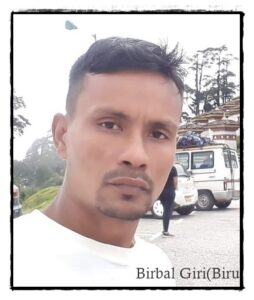 If you want to travel to any offbeat or popular tourist destinations in North Bengal, then you can contact him at his below contact number for transportation because he is not only an experienced driver but also a good guide.
If you want to travel to any offbeat or popular tourist destinations in North Bengal, then you can contact him at his below contact number for transportation because he is not only an experienced driver but also a good guide.
Name: Birbal Giri (Biru), who resides in Chalsa, Dooars region (West Bengal)
Contact Number: +91 9733132184 (WhatsApp)

I have only shared with you my memorable experiences with homestay owners, drivers, or tour guides while traveling, but your experience may not be the same as mine. Hence, I have no responsibility in that case. I am just sharing information only.

- The salamander’s most adapted habitat was at Jorepokhri, which is located near Sukhiyapokhri, a rural town about 20 km from Darjeeling town. Researchers first discovered large numbers of salamanders in 1964.
- Indian poet and novelist Maitreyi Devi, who wrote the novel Na Hanyate in 1974 and received the Sahitya Akademi Award in 1976 for this famous novel.
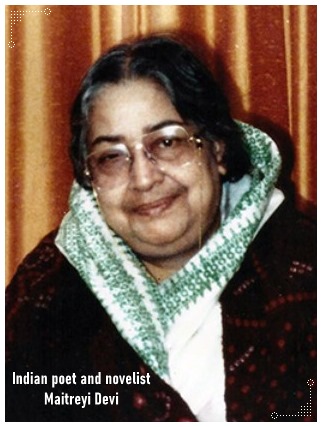
Archive
Tags


Very much impressive Blog. Wonderful job bhai 🙏🙏🙏🙏🙏
Very good article and helps to know more about West Bengal.